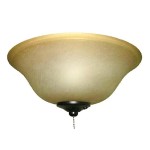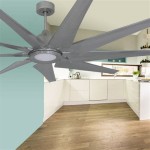Essential Aspects of Ceiling Lighting Fixtures
Ceiling lighting fixtures play a crucial role in illuminating a space, contributing to the overall ambiance and functionality of a room. When selecting and installing these fixtures, several essential aspects should be taken into consideration to ensure optimal lighting and a visually appealing aesthetic.
Type of Fixture
The type of ceiling lighting fixture chosen depends on the purpose of the room, the desired ambiance, and the available ceiling space. Common types include:
- Pendant lights: Suspended from the ceiling, these fixtures create focal points and provide ambient light.
- Chandeliers: Ornate and multi-armed, chandeliers are ideal for formal spaces and high ceilings.
- Recessed lights: Installed within the ceiling, these fixtures provide concealed lighting and a sleek appearance.
- Flush mounts: Fixed flush against the ceiling, these fixtures are suitable for low ceilings and small spaces.
Light Output and Color Temperature
The light output of a fixture is measured in lumens, which determine the brightness of the light. The color temperature refers to the warmth or coolness of the light, expressed in Kelvins (K). Warmer light (2700-3000K) creates a cozy ambiance, while cooler light (4000-5000K) provides a more invigorating effect.
Beam Angle and Distribution
The beam angle refers to the angle at which light is emitted from the fixture. A narrow beam creates a focused spotlight effect, while a wide beam provides a more diffused and even illumination. The distribution of light also affects the overall lighting effect, with direct lighting providing focused illumination and indirect lighting creating a softer, ambient glow.
Mounting Height and Placement
The mounting height and placement of ceiling lighting fixtures can significantly impact the lighting effectiveness and ambiance. Fixtures should be placed strategically to avoid creating shadows or glare. The optimal mounting height depends on the type of fixture, the ceiling height, and the desired light distribution.
Style and Aesthetics
In addition to functionality, the style and aesthetics of ceiling lighting fixtures can contribute to the overall decor of a room. From traditional chandeliers to modern pendant lights, there is a wide variety of designs available to match any interior design style. The finish, color, and material of the fixture should complement the existing furnishings and create a cohesive look.
Conclusion
By considering the essential aspects of ceiling lighting fixtures, homeowners and designers can create optimal lighting solutions that meet both functional and aesthetic requirements. From selecting the appropriate type of fixture to determining the right light output, color temperature, and placement, these factors ensure that ceiling lighting enhances the ambiance of a space while providing adequate illumination for everyday activities.

Ceiling Lighting At Lumens

Modern Aisle Light Hall Crystal Ceiling Lamp Fixture Black Gold Hallway Lighting

Silver Star Ceiling Light Double Ring Scandinavian Design Lamp Lighting S 18park

Open A Room Full Of Ceiling Lights 3 Circles Lamp Lighting S 18park

Black Modern Ceiling Light Fixture Industrial 4 Lamp Semi Flush Mount Chandelier Lighting For Farmhouse Kitchen Bedroom Living Room E26 Base Bulb Not Included Newegg Com

Dinglilighting 5 Lights Rectangle Chandelier Black Metal Linear Modern Pendant Lighting Industrial Cage Kitchen Island Ceiling Light Fixture For Dining Room Foyer Bar Hight Adjustable Com

Modern Ceiling Lights Fixtures With Led N Lighten

Nordic Style Semi Flush Mount Lighting Gold Black Ceiling Light Fixture Led Ring Homary

Ceiling Lights Lamps Plus

Ceiling Light Kaleidoscope Scandinavian Design Lamp Lighting S 18park
Related Posts








